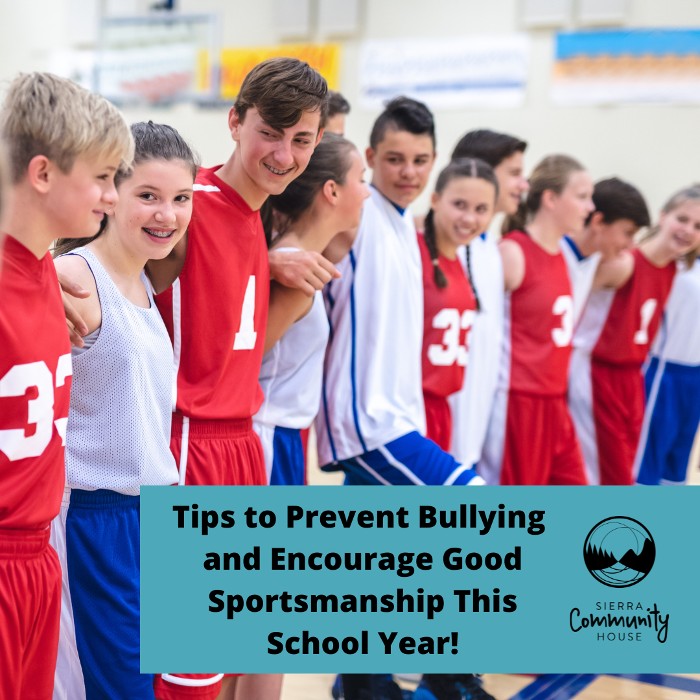Written by Dominique Apollon, Community Education & Prevention Coordinator and Ashley Duke, School-Based Prevention Education Coordinator
It’s “Back-to-School” time again, which means the Sierra Community House Prevention Team has already started scheduling the age-appropriate violence prevention programming our organization has been delivering to K-12 students for decades in area public and private schools. But Summer’s end also brings other opportunities for us to engage in the broader community beyond the classroom.
Fall youth sports will soon be in full swing, and whether it’s baseball, football, lacrosse, soccer, or other team sports, local recreational leagues and programs often depend on volunteer coaches to help fulfill their missions. Coaches can serve as essential role models, teachers and trusted adults for the values and skills of teamwork, leadership, and respect, among others. Not to mention molding spaces where kids can just have fun and be themselves.
Whether you’re a novice coach who may not know how to handle inappropriate or harmful situations that sometimes arise, or a veteran coach in need of a refresher, we offer “Three Practical Ways Coaches Can Promote a Healthy Team Environment to Prevent Bullying”:
#1 – Learn the warning signs that a child may be experiencing bullying. When leading bullying prevention workshops with parents, the Prevention Team at Sierra Community House highlights some warning signs that may be difficult for part-time coaches to pick up on, such as a “sudden drop” in grades, personal possessions going missing/damaged, uncharacteristic nervousness and worry, or finding excuses for not wanting to attend practices or games. Nevertheless, learning these signs provides a good reminder for taking time before and after practices to get to know your players a bit off the field, and signs of losses of interest provide opportunities to check in with athletes and/or parents to make sure things are okay, and to let them know that you care.
#2 – Stand up for players experiencing bullying. There are many reasons coaches and others give for not intervening when bullying occurs – from limited time, energy, and know-how to uncertainty about if it’s the coach’s role/responsibility, and chalking the behavior up to a “kids will be kids” explanation. To create a community where all children feel valued, and to reduce feelings of isolation, it’s important for coaches to overcome these barriers and send a clear message of respect and care. It can help if the coach has set the team’s expectations early, grounded in the leagues’ and their own values around sportsmanship and teamwork. In our workshops, we also counsel adults and kids alike to condemn the choice to engage in bullying behavior, rather than to label an individual as a “bully”, as if they cannot make another, kinder choice about how they treat their teammates and others.
#3 – Encourage your players to stand up for each other. While coaches are key figures in establishing and guiding expectations, they are not alone in creating a positive team culture. They can and should do this together with their players, who can sometimes be in the best position to stop bullying on the front lines that adults might indeed miss. Practice positivity and encouragement, for example, by circling up at the end of each practice to have your athletes take turns sharing one positive thing about another player’s actions or attitudes. Cultivate an “on our team, we look out for each other” mentality. And ask players to check in with themselves about how they exemplified being a good teammate. And if they weren’t the best teammates today, how can they be better tomorrow?
We wish all the coaches – new and experienced – best wishes and thanks for this upcoming season and beyond. We would love to hear your thoughts, experiences and ideas on this and other topics. Please email your comments or ideas to [email protected] and we’ll check back later this Fall to share some of the feedback and further reflections.
For more information on signs a child may be experiencing bullying or practical ways coaches can prevent bullying on their team, see the resources linked below:
https://truesport.org/bullying-prevention/warning-signs-bullying-youth-sports/






